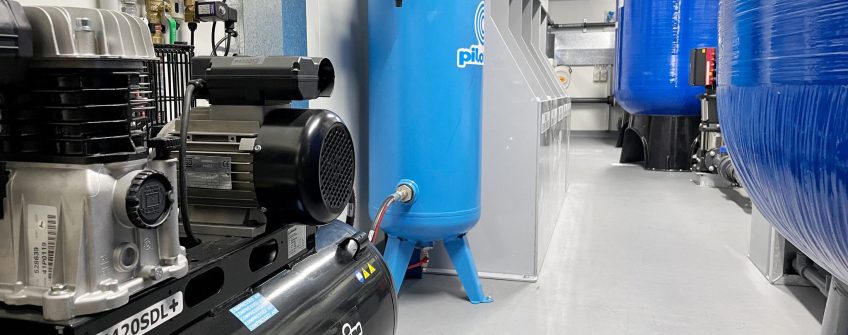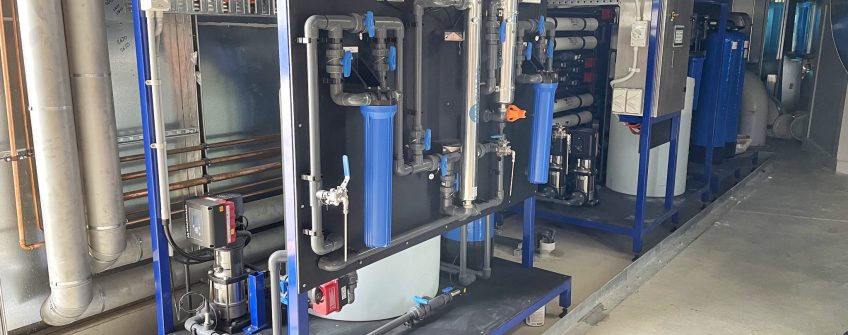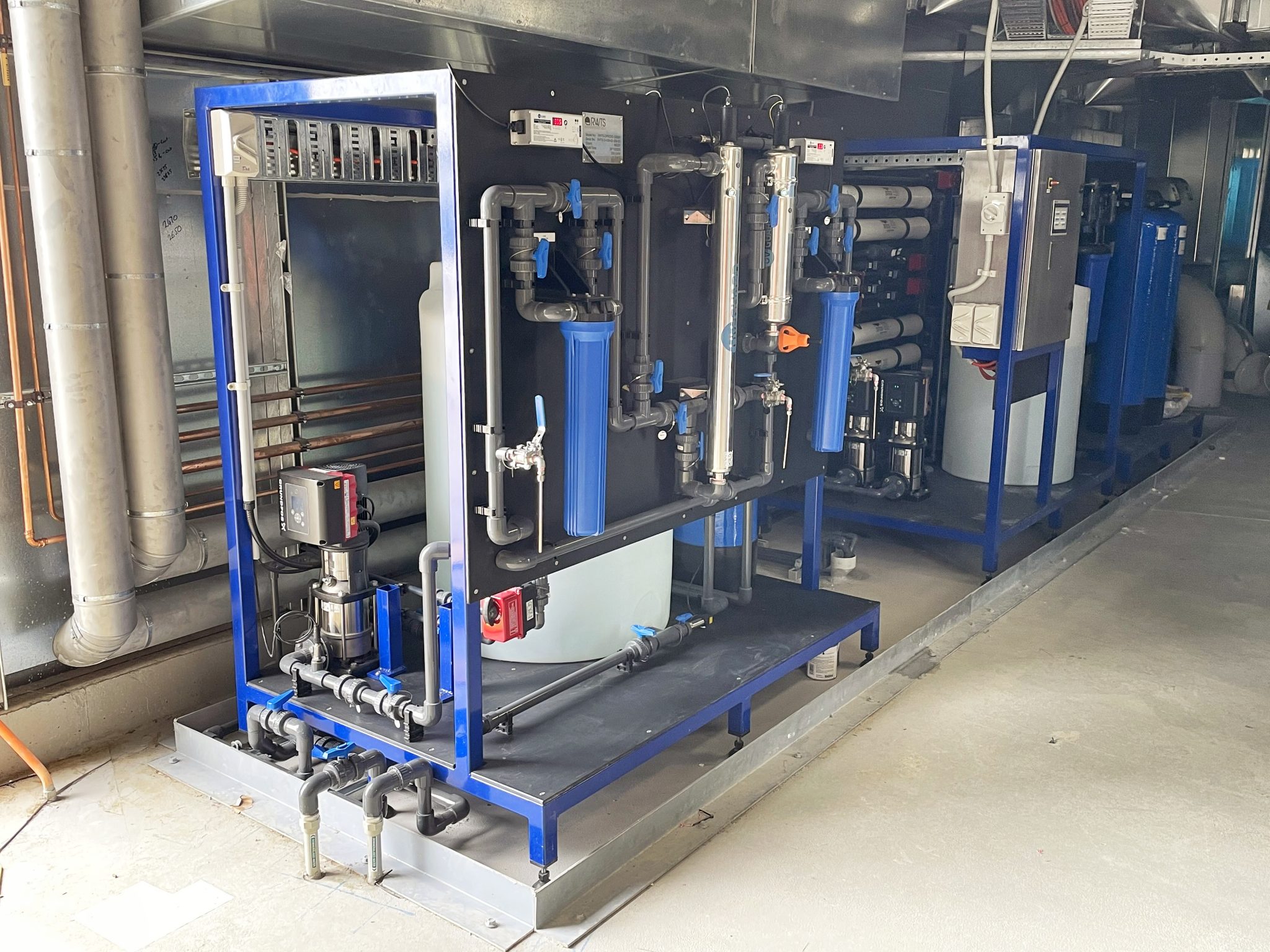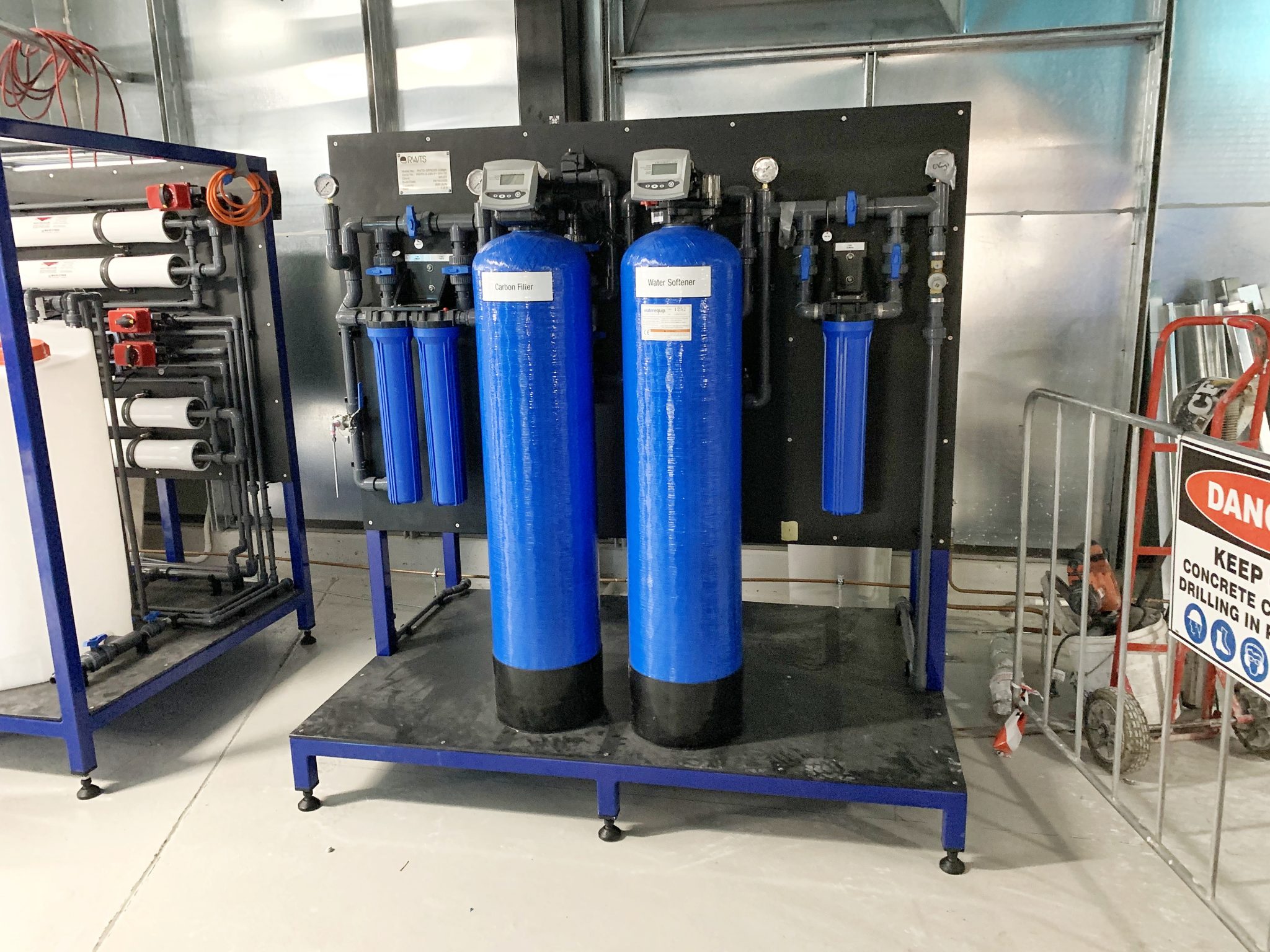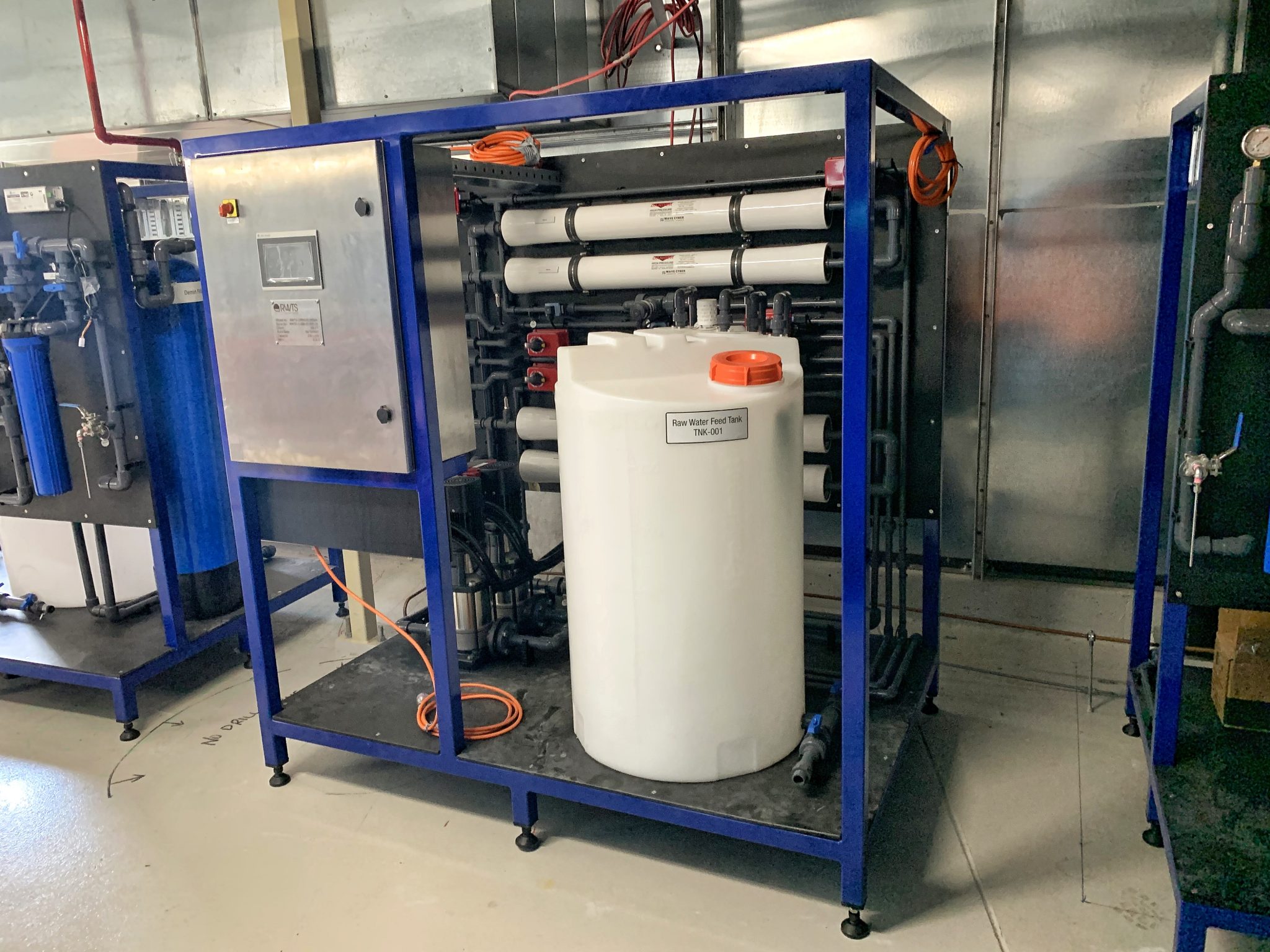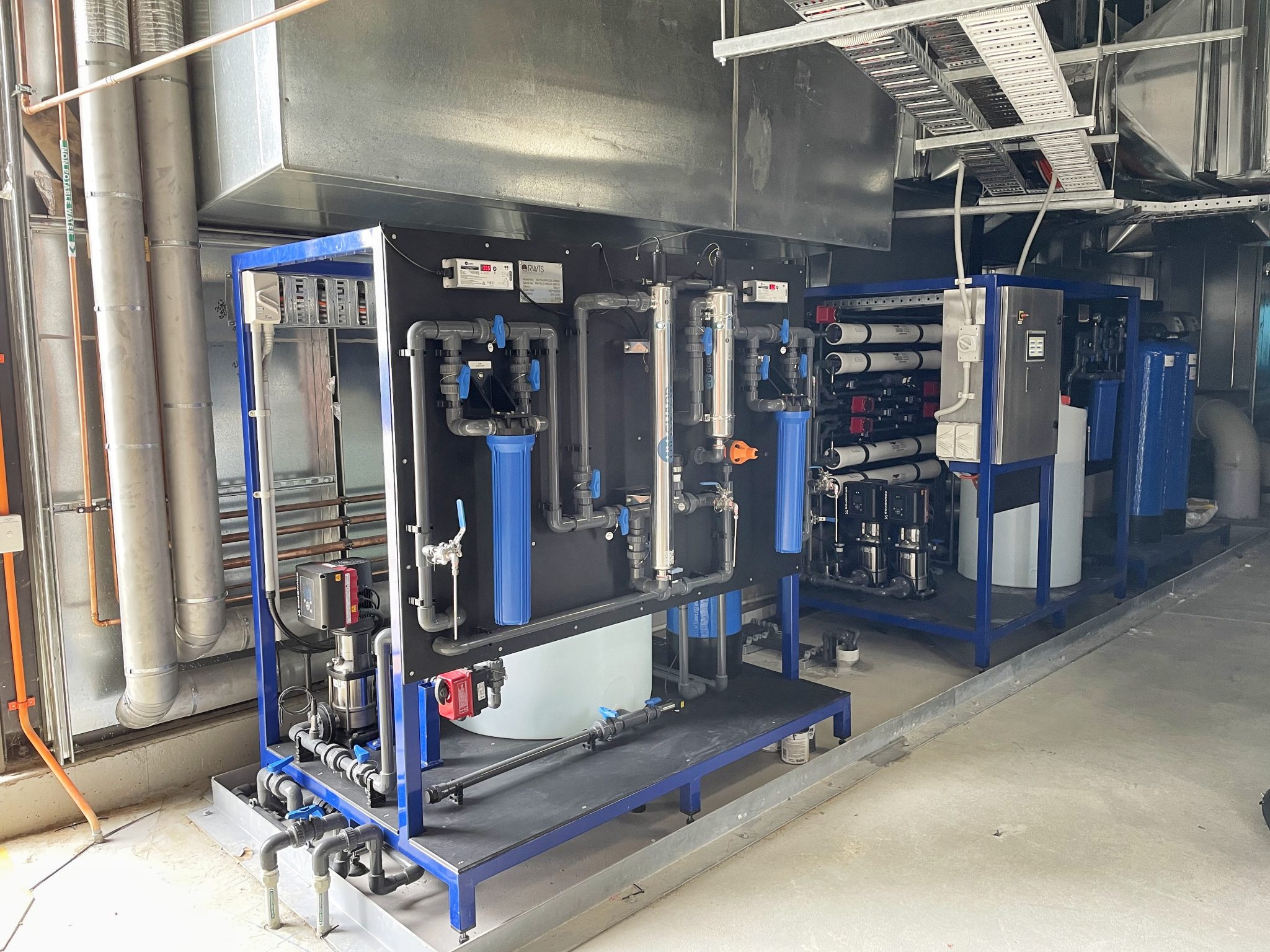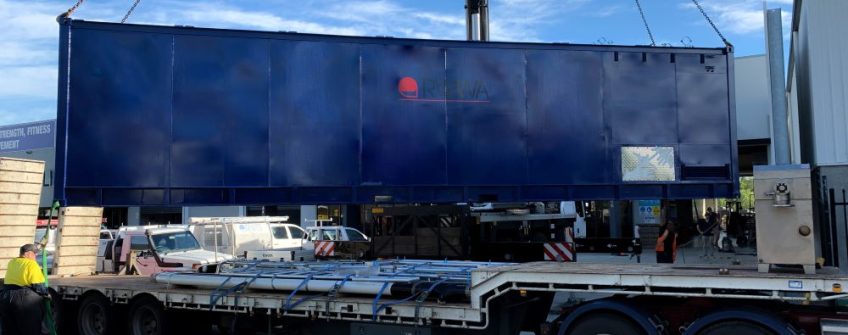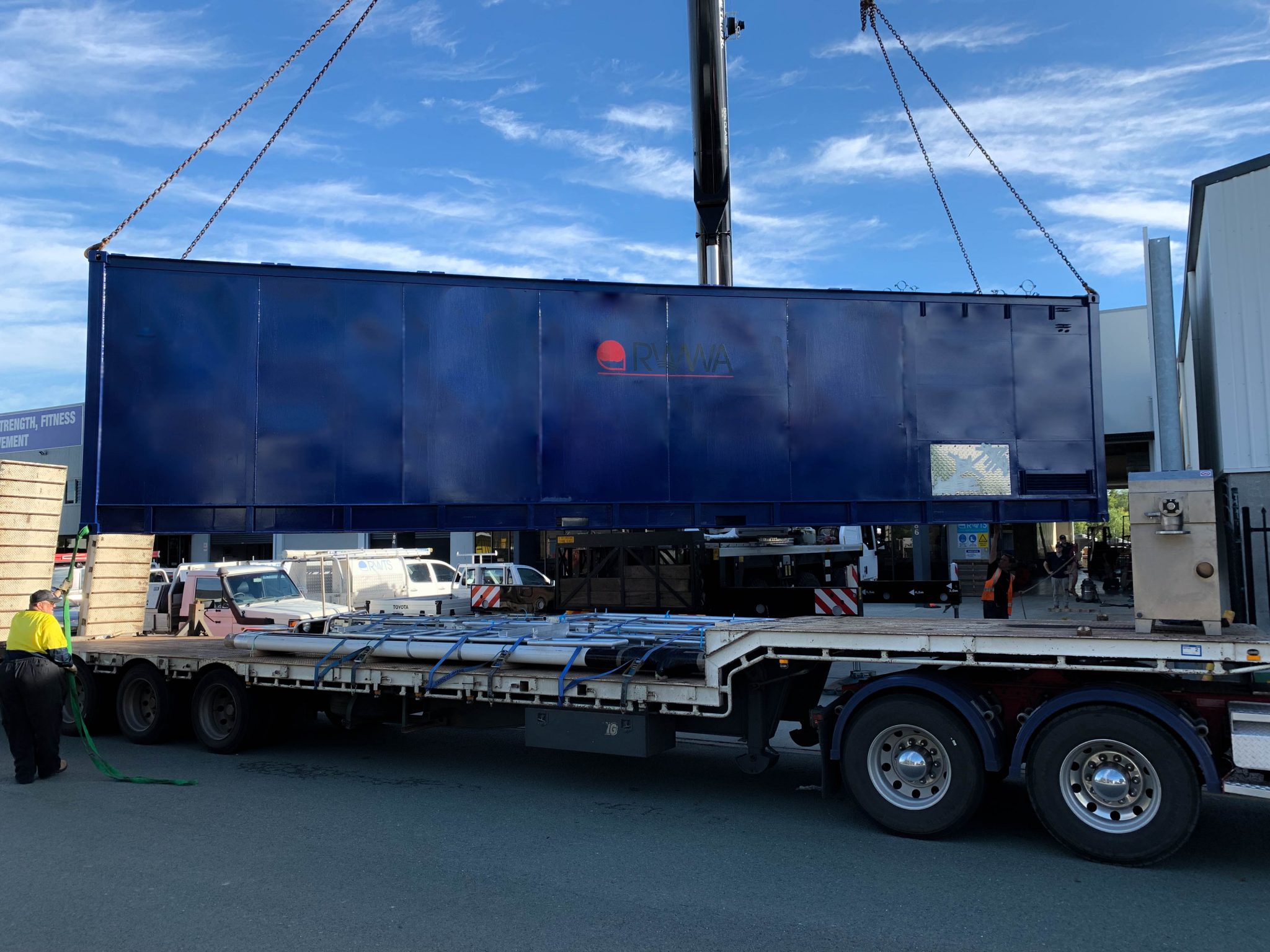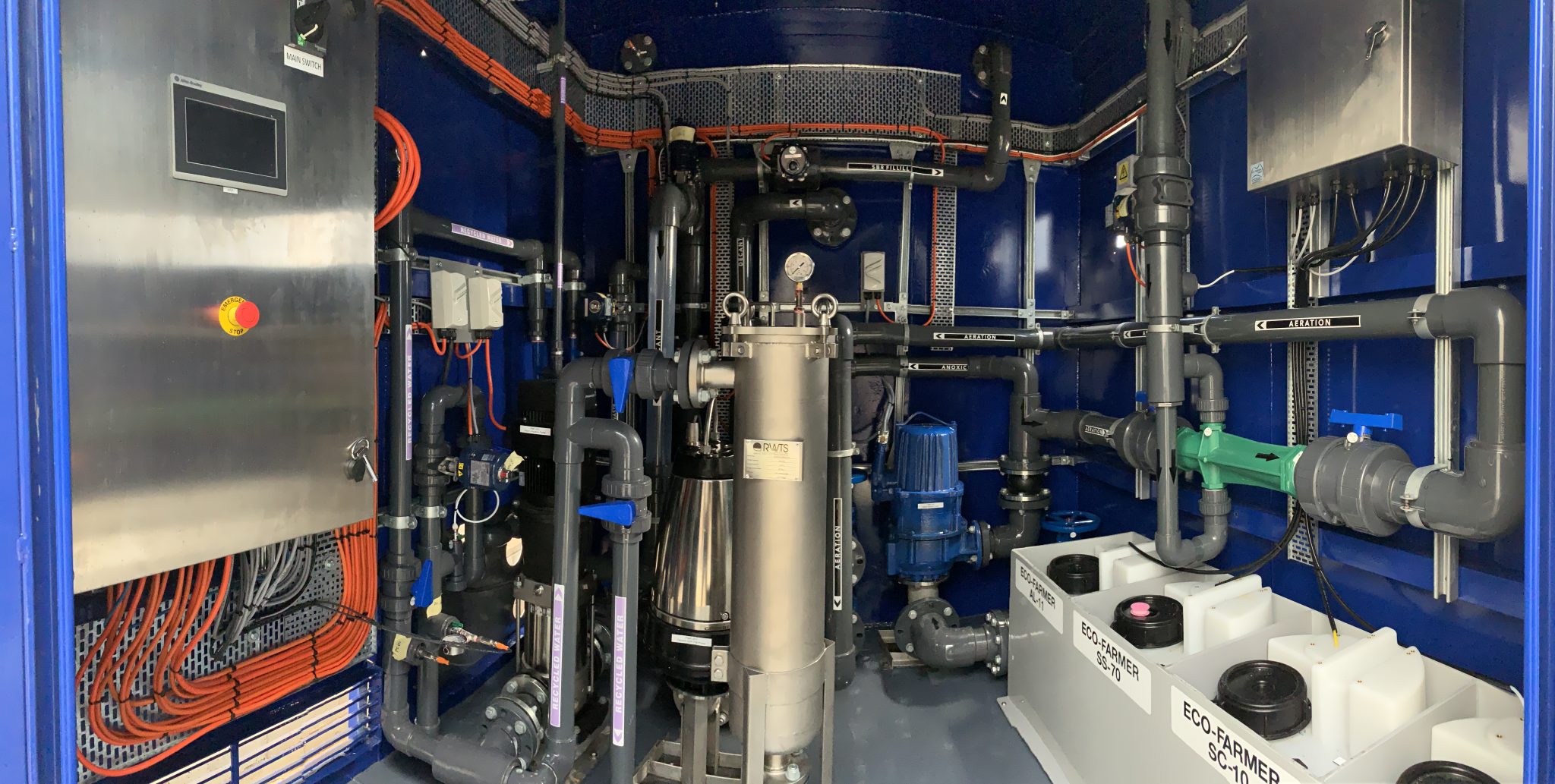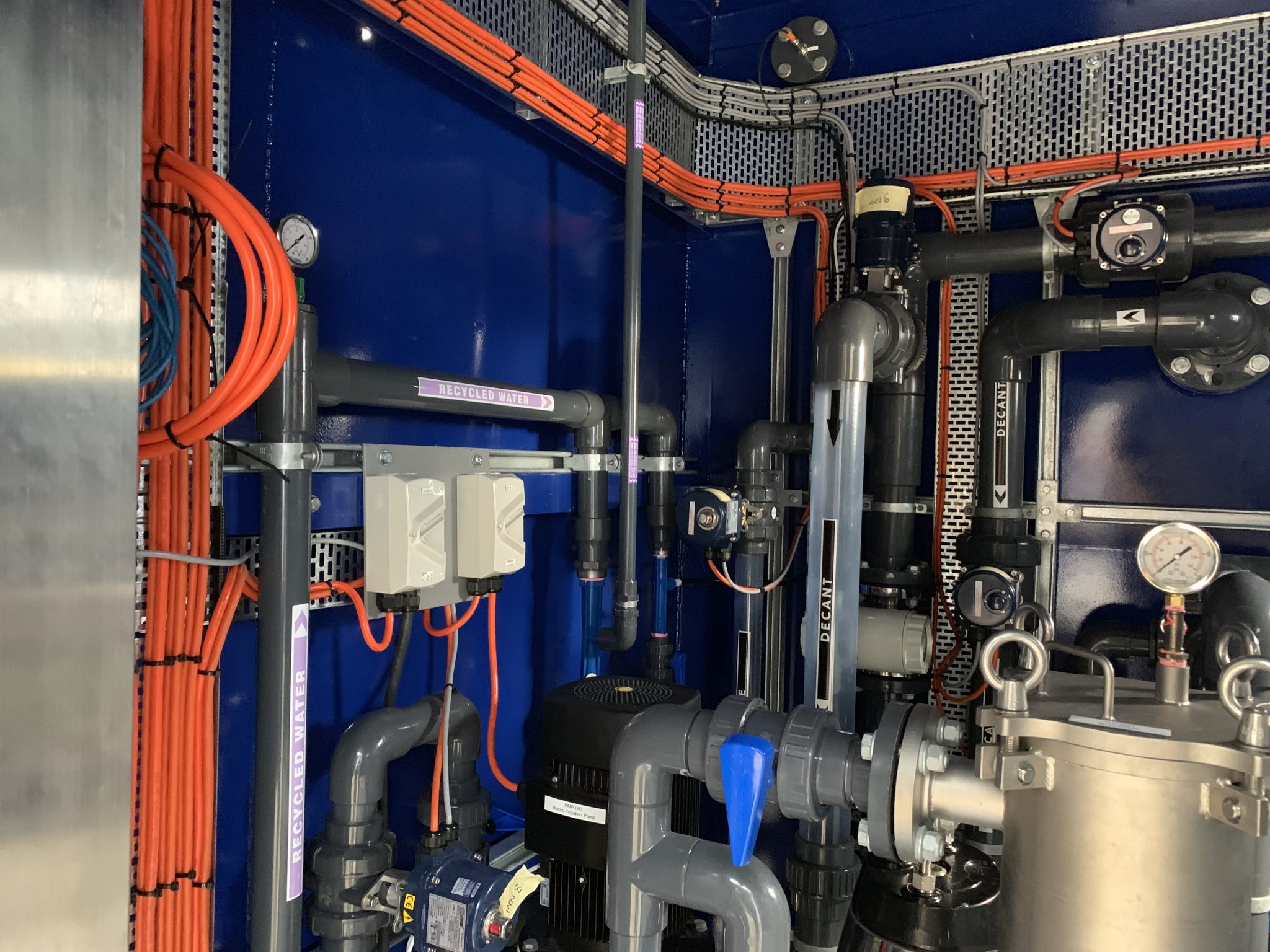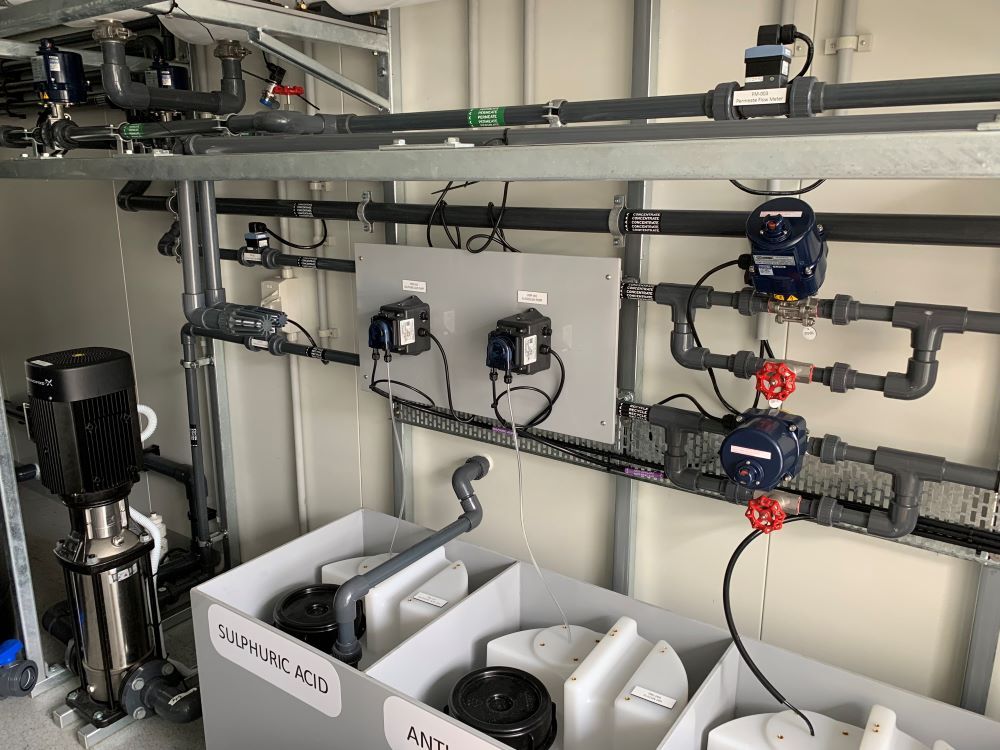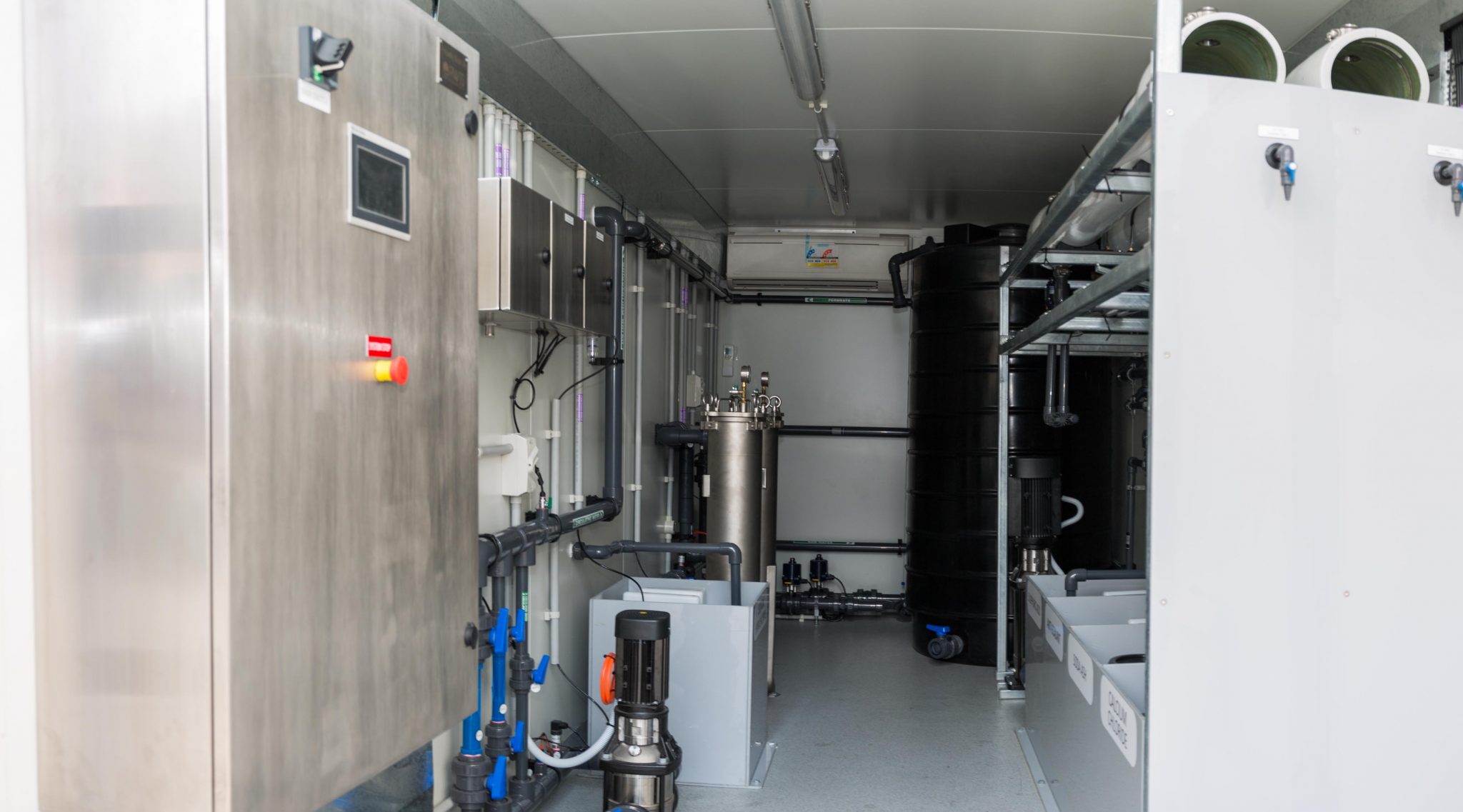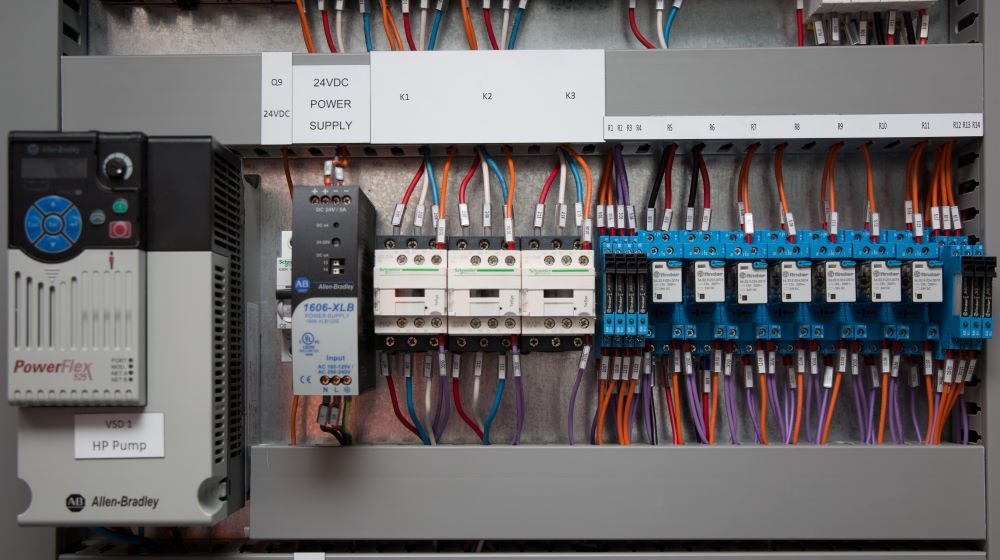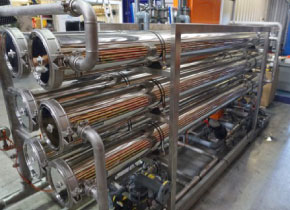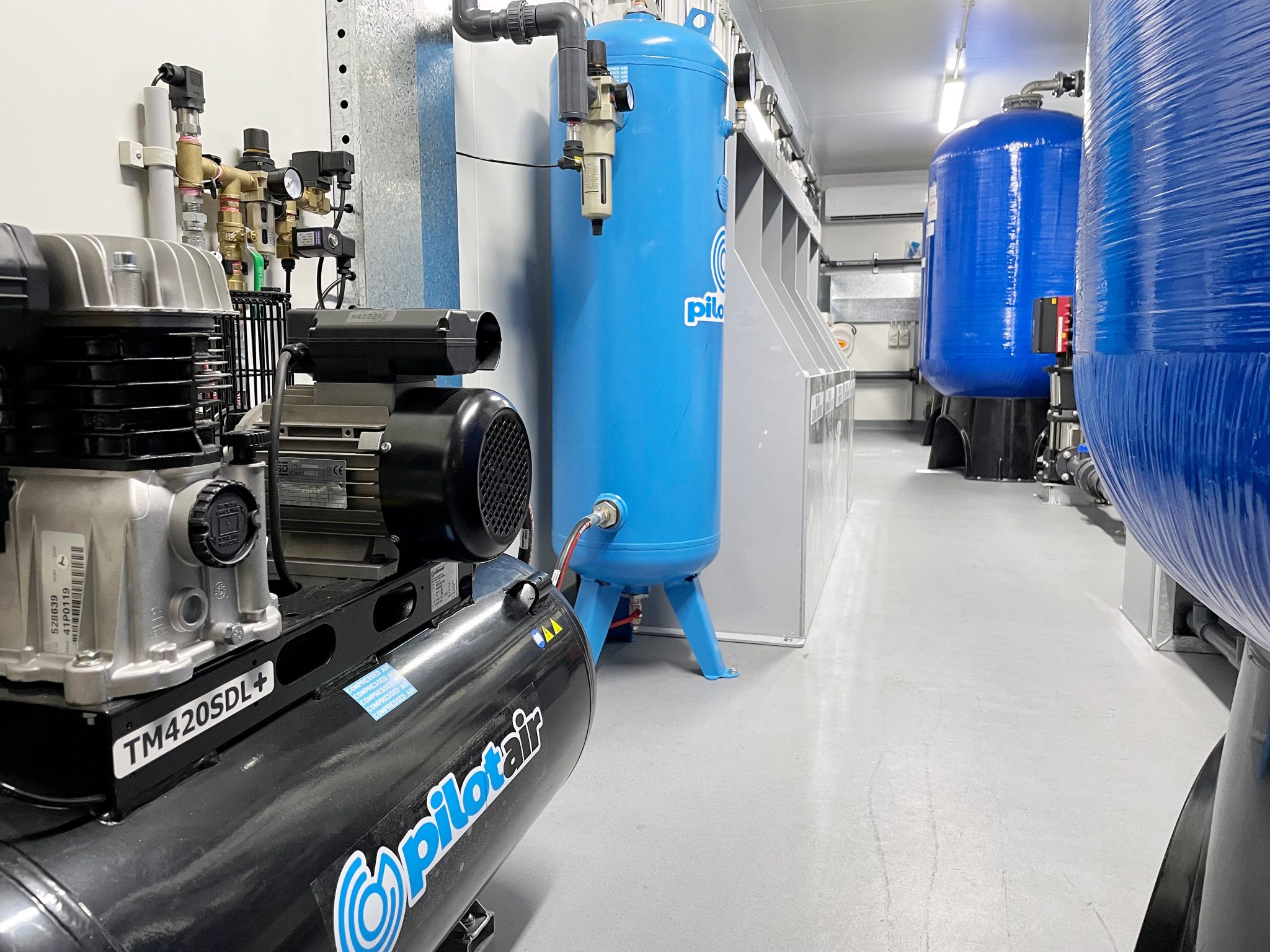
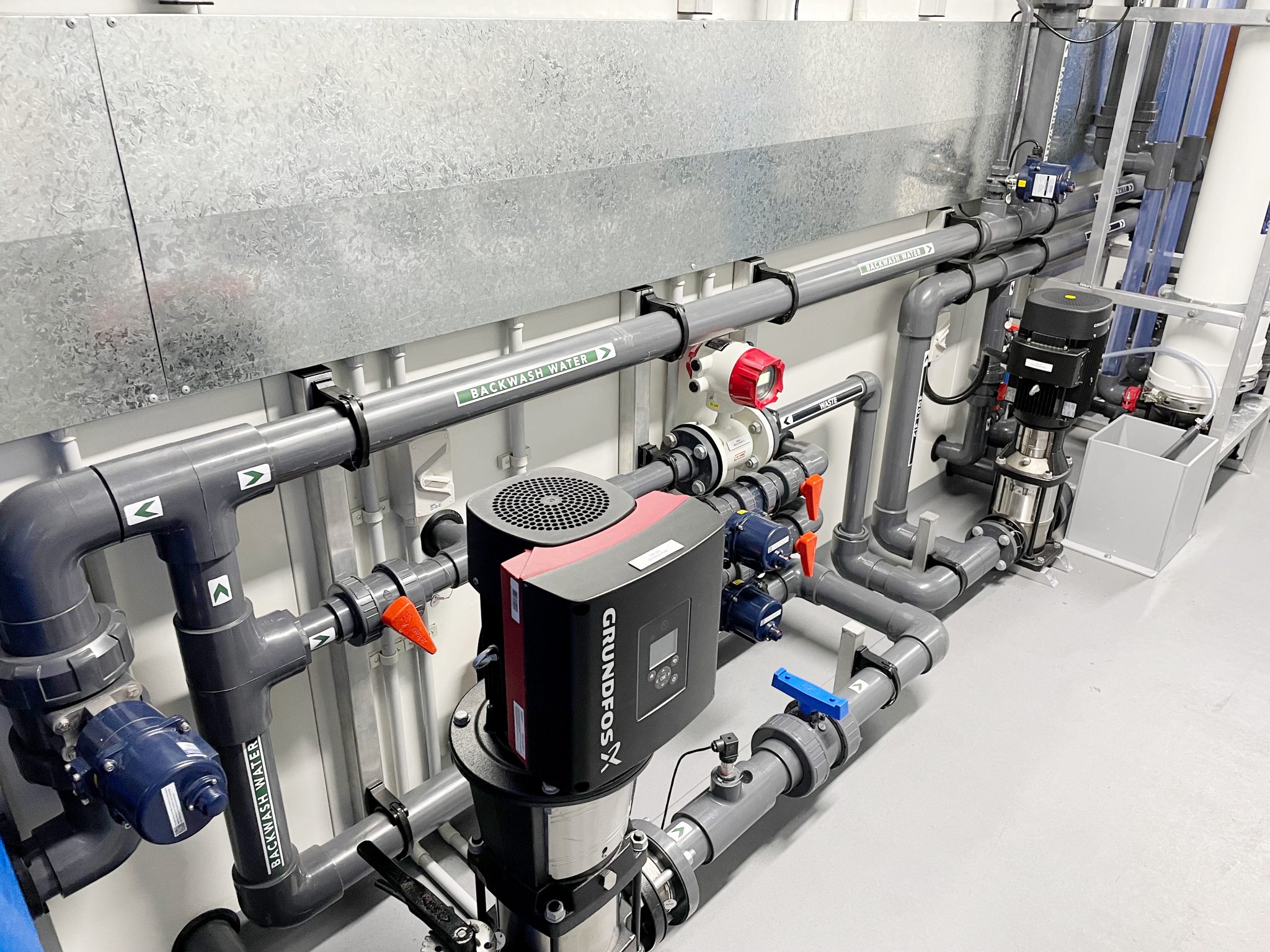
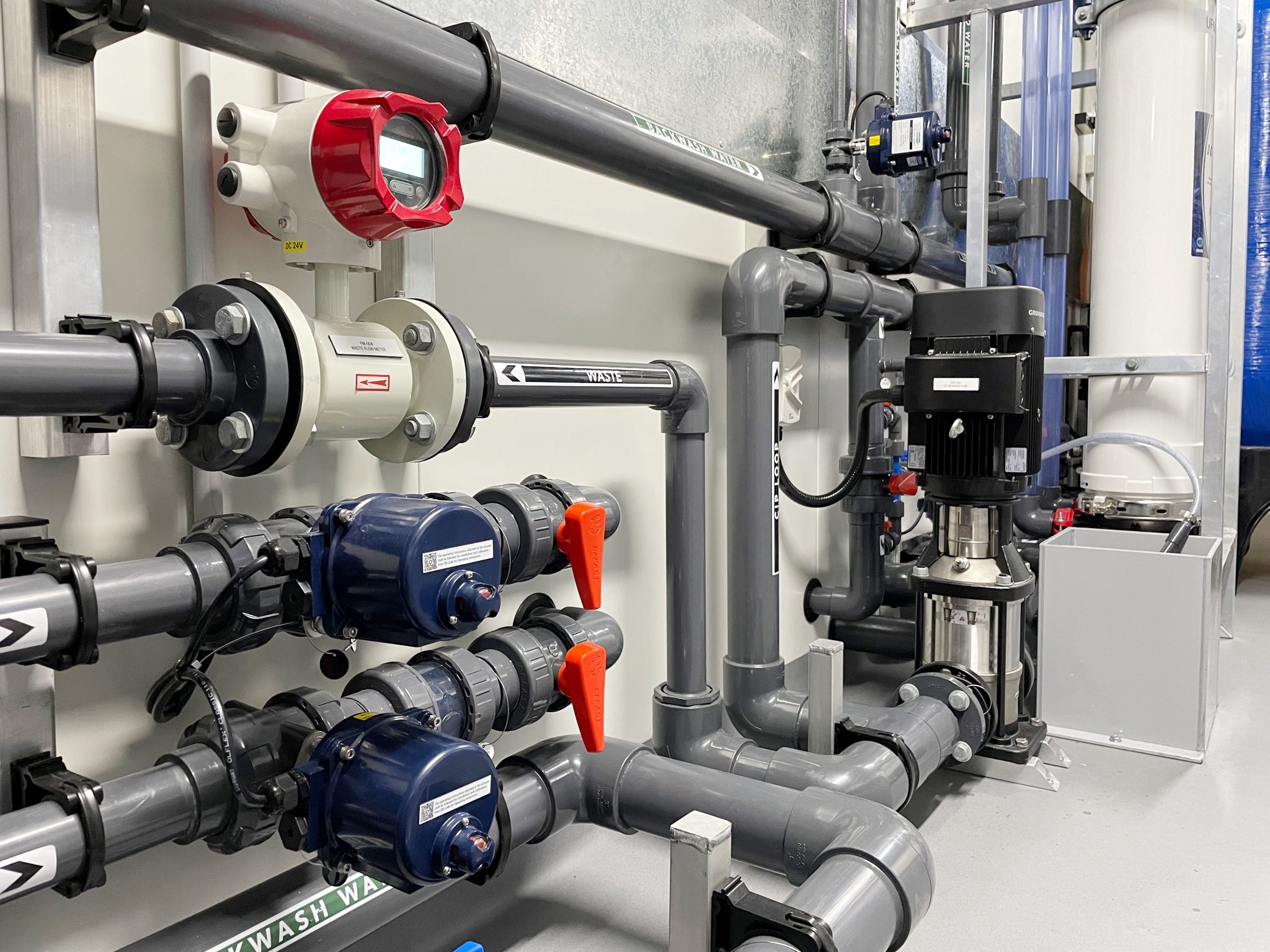
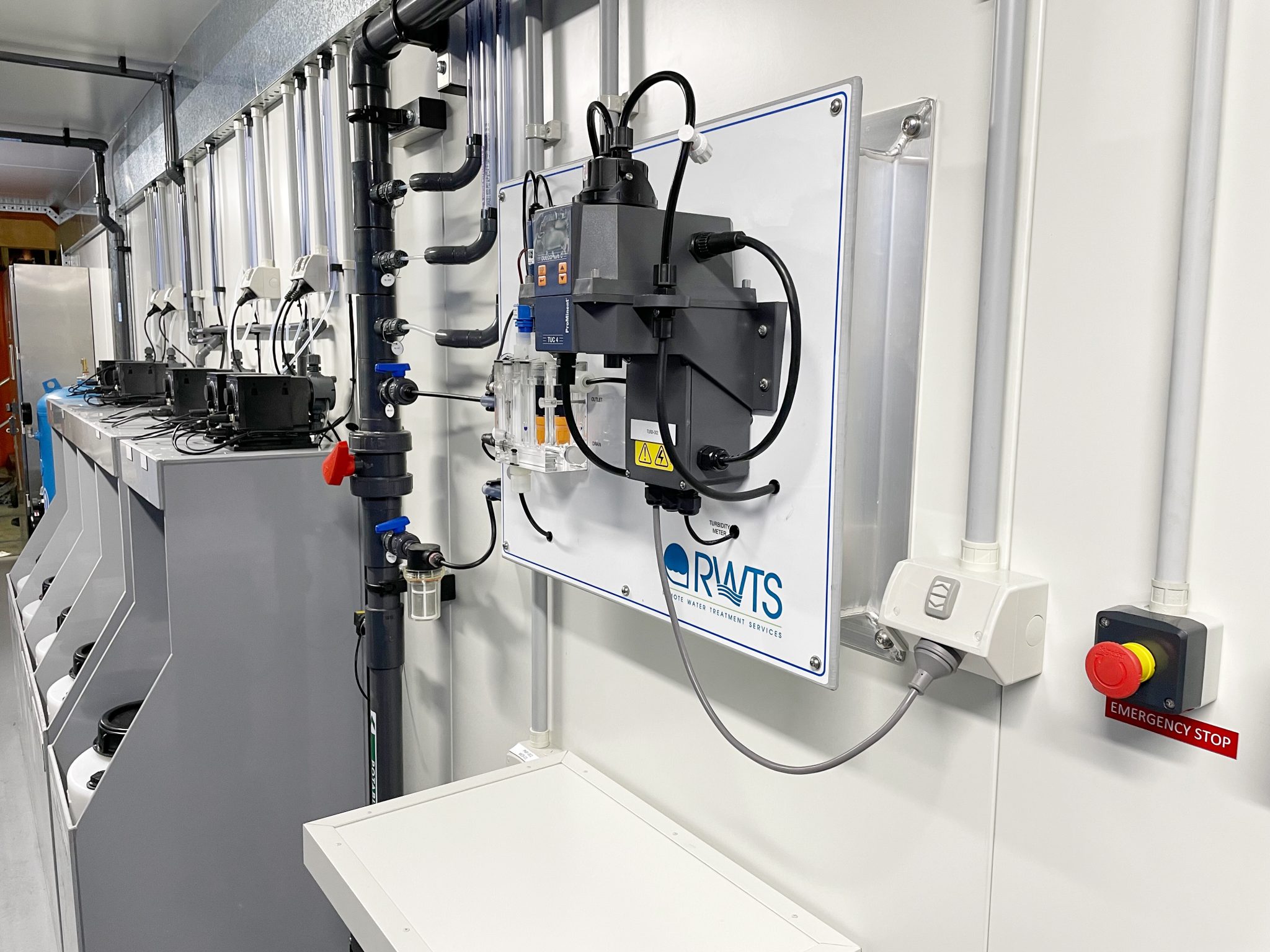
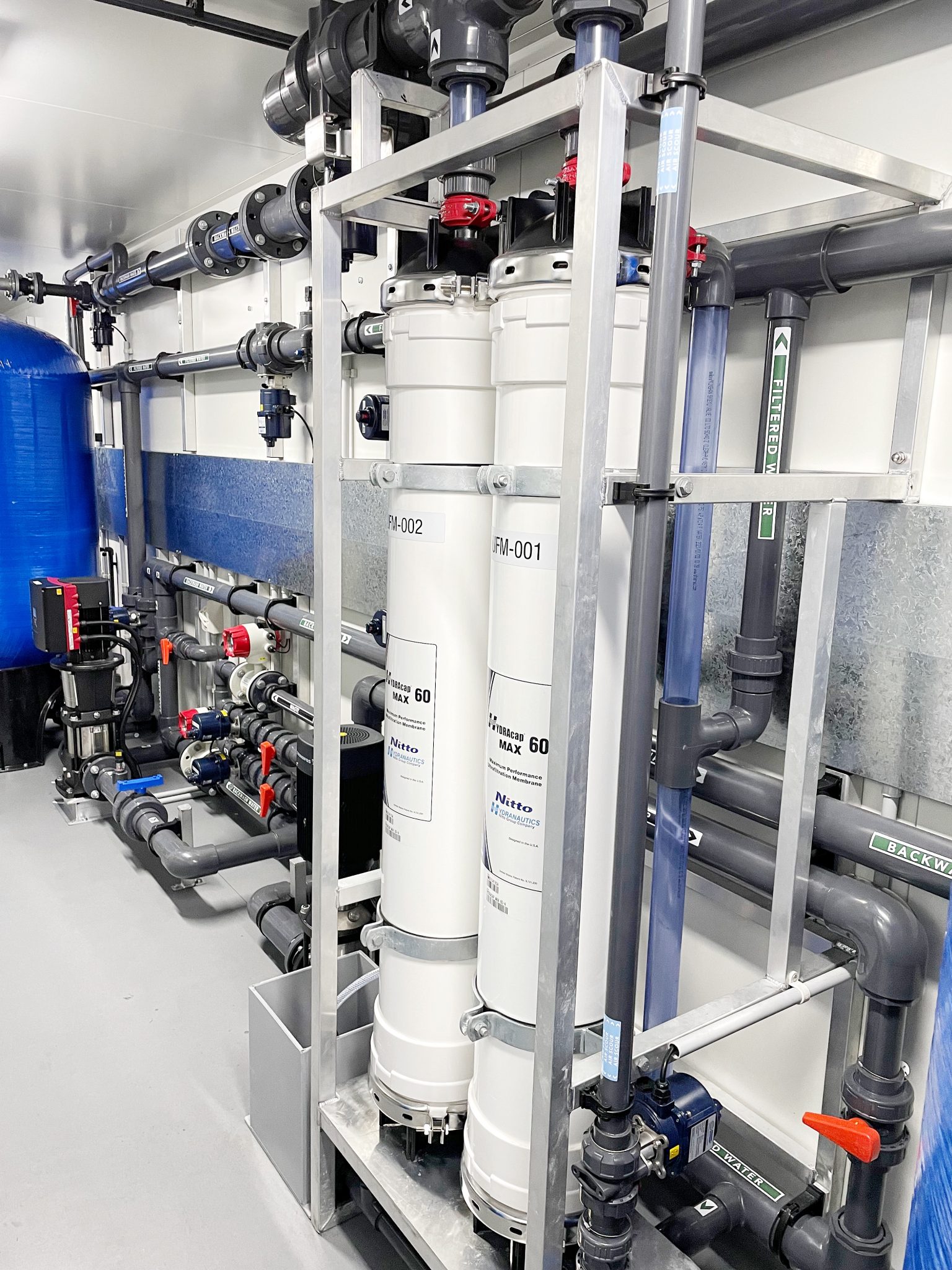
Our client, Canstruct chose a custom built surface water treatment plant to produce safe and reliable potable water for human consumption.
Client: Canstruct
Location: Northern Territory
Solution: 40ft containerised Surface Water Treatment System
Industry: Agriculture
BACKGROUND
Canstruct are constructing new and upgrading existing facilities to support industry activity that is requiring a suitable water treatment facility to cater for persons on site.
RWTS was successfully awarded the contract to supply a 40ft containerised surface water treatment system to produce safe and reliable potable water for human consumption.
When accessing the design of the surface water treatment plant we took into account some key consideration based on site specific risks and project requirements.
Requirements for the WTP for this application were as follows:
- Variable site loads – load swings and variable quality raw water characteristics
- Seasonal Variance affecting organic loads, TOC Levels and Algae Levels in raw water supply
- Upstream Catchment Assessment shows the source water as Category 4
- Upstream variability in raw water quality including cattle farming – cryptosporidium risk is high.
- High Protozoa risks associated with the source water combined with the location of the catchment and temperature averages.
- Indicative raw water test results show an extremely low LSI index (corrosive Index rating) resulting in the design requiring remineralisation as an addition to the primary process requirement.
- 20 year design life with an acceptable ongoing cost
THE RWTS SOLUTION
CUSTOM BUILT WATER TREATMENT PLANT

RWTS designed and constructed a surface water treatment plant with a nominated design flow rate to provide a minimum of 75,000 litres per day.
The nominated recovery range for this system was 85% – with a worst case expected recovery during very high solids loading periods of 55%.
Raw water required for the 20 kl per day potable water was between 88,500 litres per day minimum and as high as 136,000 litres per day – depending on raw water quality.
There was several stages of the water treatment process implemented into the design and construction of this customize water treatment plant including;
- Stage One – Chemical Dosing
- Stage Two- AFM Media Filtration
- Stage Three – Ultrafiltration
- Stage Four – GAC Carbon Media Filtration
- Stage Five – Ultraviolet Disinfection Post Filtration
- Stage Six – Calcite Media Remineralisation Filtration
- Stage Seven – Chlorine Dosing For Disinfection Post Filtration
- Stage Eight – Chlorine Dosing And Ph Correction For Treated Water Storage Facility
OVERVIEW OF DESIGN AND SYSTEM FITOUT
The following key summary points outline the fitout of the system:
- Electrical Control Panel/Switchboard – Exceeds AS 3000 Requirement
- Custom Fabricated 40 Foot Container Based Building with Air Conditioning, Vinyl Flooring, Fridge Panel 50 mm Thick Insulation Panel Lined Internal Roof and Walls for Temperature Control.
- Allen Bradley Micro-logix series PLC and Colour 10 inch HMI Screen Interface
- Remote Dial In and SMS out E-Won Cosy Modem Platform for remote assistance support and alarm notifications.
- Industry Standard high quality electrical components such as Schnieder, Hager and Finder.
- 415 volt/240 volt segregated from 24 volt compartment
- Overloads and Circuit breakers accessible from safe outer door to internal retainer door mounted position – no exposed terminals
- Earth Leakage to AS 3500.
- External Building Colour of clients choice
The water treatment system included a Grundfos CRIE15 Series duplex multistage pump set complete with variable speed drive motors. A PID Pressure targeting software control via an Allen Bradley PLC/HMI package was installed.
The pump set was sized to ensure each pump delivered 15l/sec @40 mtrs delivery head, allowing a duty standby control methodology, which allowed a final duty achieved of 10 ltrs second at 400 kpa.
A flow meter was installed on the treated water delivery line out of the system to monitor discharge flows. This would ensure the data logging of usage volumes and peak flows as well as ensuring if there were any issues an alarm would be triggered to alert operations immediately.
Results:
There was significant consideration into the site-specific risks for treatment and delivery in design and construction to ensure the final filtered and disinfected water in potable water storage complied with the Australian Drinking Water Guidelines (ADWG).
RWTS delivered a potable water treatment plant that provided a daily minimum of 75,000 litres of safe and reliable potable water for human consumption.
The water treatment system was designed and fabricated in a transportable/semi-permanent or permanent installation arrangement to provide continuous service with the required maintenance for a 20 year life expectancy.
NEED AN INNOVATIVE SYSTEM THAT DOES NOT FAIL?
If you are wanting a water treatment system that works all day every day with the ability of remote monitoring, please call one of our friendly engineering team today to discuss your waste water issues and how we can help.


